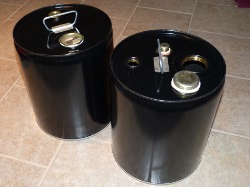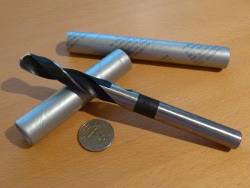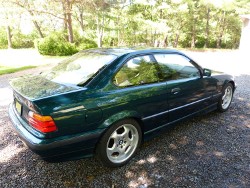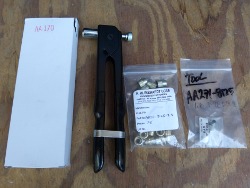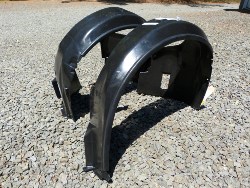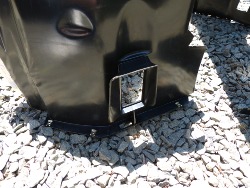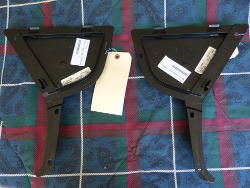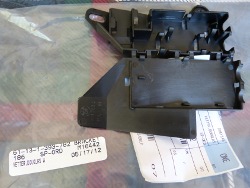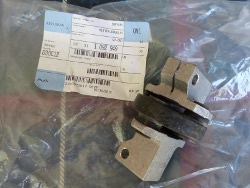Friday, May 18, 2012
Waste Oil Containers
For a long time I've been using old 5 gallon plastic containers similar to spackle cans originally used to hold hydraulic oil to store the many gallons of waste oil I accumulate before I have time to make a trip to the local hazmat facility. The containers have press-fit tops and small flexible (non-removable) spouts. They have worked reasonably well and I've never been willing to balk at the price (free), but they are not the perfect solution. The tops aren't exactly secure and are prone to leak, particularly if they are tipped over while being filled or transported.
For this reason I've been more than a little leery of storing the containers inside the garage. And storing containers with leaky tops outside in the weather creates its own hassle as I discovered once at the hazmat facility. They don't mind taking contaminated oil but they differentiate that from straight used motor oil, and I couldn't help but feel embarrassed when I watched the attendant abruptly stop pouring from one of containers as water started gushing out of it. Not wanting a repeat of that I decided to research a better solution in the form of a plastic waste oil container that could be properly sealed against the elements if I choose to keep them outside.
The search started at Home Depot, migrated to Lowes, and finally Tractor Supply. None had what I was looking for. All the plastic containers seemed to contain spouts like traditional gas cans, and if you've bought a gas can lately you know they have all been "idiot proofed" in a way that make it them difficult to fill and drain. After striking out I redirected my search online.
I decided to research plastics compatibility first because generic plastic storage containers come in many forms and not all are manufactured out of plastic like High Density Polyethylene (HDPE) that is compatible with gasoline or other solvents. While I received a brief education in plastics I ultimately decided to avoid the compatibility issue altogether and seek out a metal container.
Unfortunately, many of the metal container designs had issues as well. I was about to give up hope when I stumbled upon The Cary Company and found something they call a five gallon tight head pail with fittings (closures), part number 26W83B. The term "tight head" refers to the fact that the top of the container is permanently crimped to its body. This particular unit came with a sturdy metal handle riveted to the lid and two fittings that mimic what you might see on the top of a 55 gallon drum -- a fill/drain port about two inches in diameter and smaller port on the opposite side of the lid about 1 inch in diameter that serves as a vent.
My quote request met with some resistance, as it first specified a minimum order quantity of six. While I planned to eventually purchase that number of containers I didn't want to purchase all six without a good close look at them, just in case I found them poorly constructed or they otherwise failed to meet my expectations. I eventually got them to sell me two containers and the total came to around $60. Yea, I know -- ridiculous for a couple metal containers -- but I decided to go ahead anyway. Shipping and handling are, unfortunately, what kill the economics of this purchase but I feel at least somewhat justified because I did try to buy locally first.
The containers arrived today and I'm happy to say that they are at least what I expected. The closures come with thick rubber gaskets so I'm sure they will seal nicely, and the handle appears to be well constructed and sturdy enough to lift the 50 or so pounds of oil required. Other than that they're nothing more than simple metal containers. I don't know when I'll place my next order but I am planning to buy at least two more. Buying another four or six at once may be the most cost effective way to acquire them, however, and I'm sure that between my brother and I they can all be put to use.
Note: I don't get anything if you buy from Cary so this is not a paid endorsement of their products.
More Front End Parts and Tools
I've decided to go with AVK AK M8 nutserts to fasten the X-brace to the subframe. I spoke briefly to my technician about it and he said he uses SAE nutserts and the compression pliers tool simply because they are more readily available. I called HW Eckhardt, the same company referred to in Ron's X-Brace Install article which is, coincidentally, as old as my car. While they said they could look up the kit number Ron set up with them long ago I just told them what I wanted, which included the AA170 pliers, AA271-8125 conversion kit and a couple dozen AK series inserts. Price? Around $60.
The AK M8 inserts require a 17/32" hole. I have a nice set of SAE drill bits but interestingly enough 17/32 was not among the selection so I searched awhile before finding a US made 17/32 inch drill bit on Amazon (note: if you click on this link and ultimately buy the product, a small amount of your purchase will support this site). The distinction between this and a couple other bits I found is the fact that its shank is turned down to 1/2 inch, making it compatible with most 1/2 inch chucks.
The new fender liners, front quarter underpanels (i.e. pork chops), ABS/Brake sensor junction box, and steering isolation joint (i.e. guibo) also arrived. I decided to avoid buying all the hardware associated with the fender liners hoping that they would at least come with the tinnerman clips. As the picture shows that turned out to be the case. I'll no doubt need additional hardware to install these properly but I'll just buy that on an as-needed basis. After looking at all the lower steering column parts I decided apply the same logic -- I'll take it apart and then buy parts as needed.
Mileage: 222222, Parts: $240, Tools: $40




